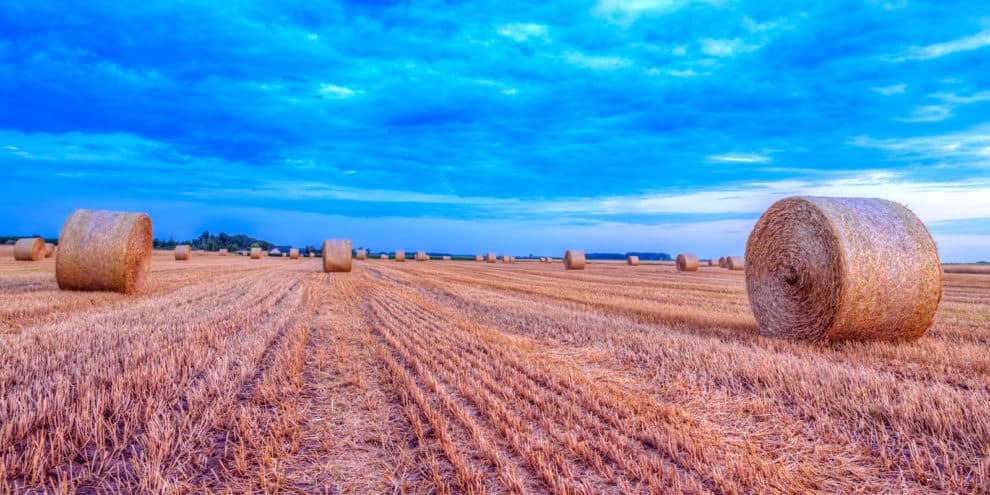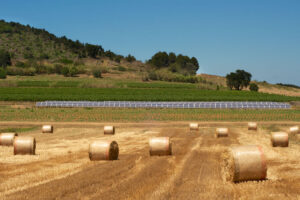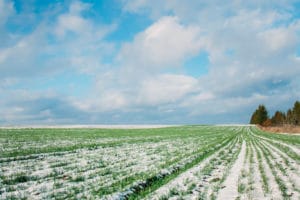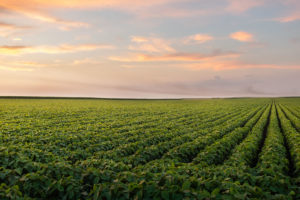After reading this column you will not likely pick up the phone to your stock broker or financial planner and tell them to sell it all because you are moving to Iowa to buy farmland and become a farmer. As enticing as that might sound, I will suggest you consider these points of data as building a case to make farmland a part of your investment portfolio.
I won’t start out the case telling you about how many wise investors like Warren Buffett, Ted Turner, or Wall Street tycoon Jim Rogers invest portions of their net worth in farmland, no I will not do that. For the record Ted Turner is the largest individual landowner in the United States with more than 2 million acres under his ownership. Instead of doing that, let me start with a fact.
Land is a tangible asset with transitional qualities and unlike many investments it cannot be downgraded to zero as can many paper assets. It will not simply evaporate into “the market” , and after a bad day of trading, you can still go take a walk on it. By transitional qualities, I mean land use continues to evolve, and while today the land’s highest and best use may be to produce food or fiber, years from now it may better serve as parkland, residential housing, or energy production as a solar farm. Farmland is adaptive and any asset which can absorb a changing economic landscape is coveted and valuable.
Because of the adaptive nature of farmland, it is not subject to the vast array of economic forces both domestically and foreign creating volatility in many other asset classes. Recognize this lack of volatility also tends to make it slow to increase in value, as average land appreciation rates of 2 to 5 percent annually provide slow but steady long term returns.
In addition to a steady rate of appreciation, farmland rents provide another source of income to increase overall annual returns and together with average rates of appreciation, fully annualized returns on farmland can be 10 percent as an asset class. Farmland rents are directly dependent on soil quality and irrigation requirements associated with the land. As water resources and irrigation are added to the land rent will increase for the property.
Farmland investing is a strategy to own commodities, as well as, an investment in the global food system. Many economists recognize the spike in commodity prices for grain in the world and that global reserves of grain are at all-time lows. While a number of factors have contributed to this fact, such as the ethanol mandate in the US (almost 40% of our Nation’s corn crop goes to ethanol production), there are also pressures from growing human populations around the world.
For instance in places like China and India, an emerging middle class is consuming an improved diet. There is considerable growth in the amount of meat being consumed in these markets, yet the rest of the world according to Time Magazine has a long way to go before they catch up with the average American that consumes more than 250 lbs of meat a year. This matters considerably because the majority of small grain serves to feed cattle, so as emerging countries increase consumption additional grain will be required to meet this need. A recent ad campaign produced by agribusiness Monsanto Co. suggested that farmers will have to produce more grain in the next 50 years than farming all together has produced for the past 10,000 years.
These soaring predictions are supported by the fact that Net farm income in the United States according to the United States Department of Agriculture is expected to reach over $97 billion in 2012. Together these data points support this asset class as being an investment worth considering. In summary farmland is a tangible investment based on current and predicted growth in human consumption utilizing a finite landscape of land resources to grow food. Together these factors while slow to develop make more than an arguable case for investing in farmland over the next decade.
There are a number of directions to take when investing in farmland with agricultural futures and farmland investment funds, as well as your local land real estate broker. As a local resource in the land brokerage community I welcome the opportunity to discuss the more than 2000 acres of inventory I am working with to match you with the type of property that fit your investment goals.
This content may not be used or reproduced in any manner whatsoever, in part or in whole, without written permission of LANDTHINK. Use of this content without permission is a violation of federal copyright law. The articles, posts, comments, opinions and information provided by LANDTHINK are for informational and research purposes only and DOES NOT substitute or coincide with the advice of an attorney, accountant, real estate broker or any other licensed real estate professional. LANDTHINK strongly advises visitors and readers to seek their own professional guidance and advice related to buying, investing in or selling real estate.










Ted Turner is not the largest individual landowner in the U.S. anymore. It is John Malone at 2.2 million acres. This has been reported in The Land Report and the Wall Street Journal.
Thanks for the update… that is noted… I am pleased you read the post! Cheers!
Ben, Ive been an investment advisor for over 30 years.Land is a non correlated asset that should be considered in some form depending on the investor. Insurance companies and pension funds have been investing in farmland for years but like any other investment, the investor needs to buy smart and also understand what he is buying.Good article.
As to the other comment, John Malone just bought about a million acreas of timberland in Maine which I believe represents about half of the state.
Thanks David for your comments… I am continuing to refine the math on this thinking, but I think long term maintenance and building repairs can often diminish long term gains associated with owning investment grade office space or Multi-family… At least with land you don’t have to replace the roof every ten years!
That didn’t seem quite possible. According to a quick search, ME has 22.6 million total acres. Not that a million acres is a small purchase…